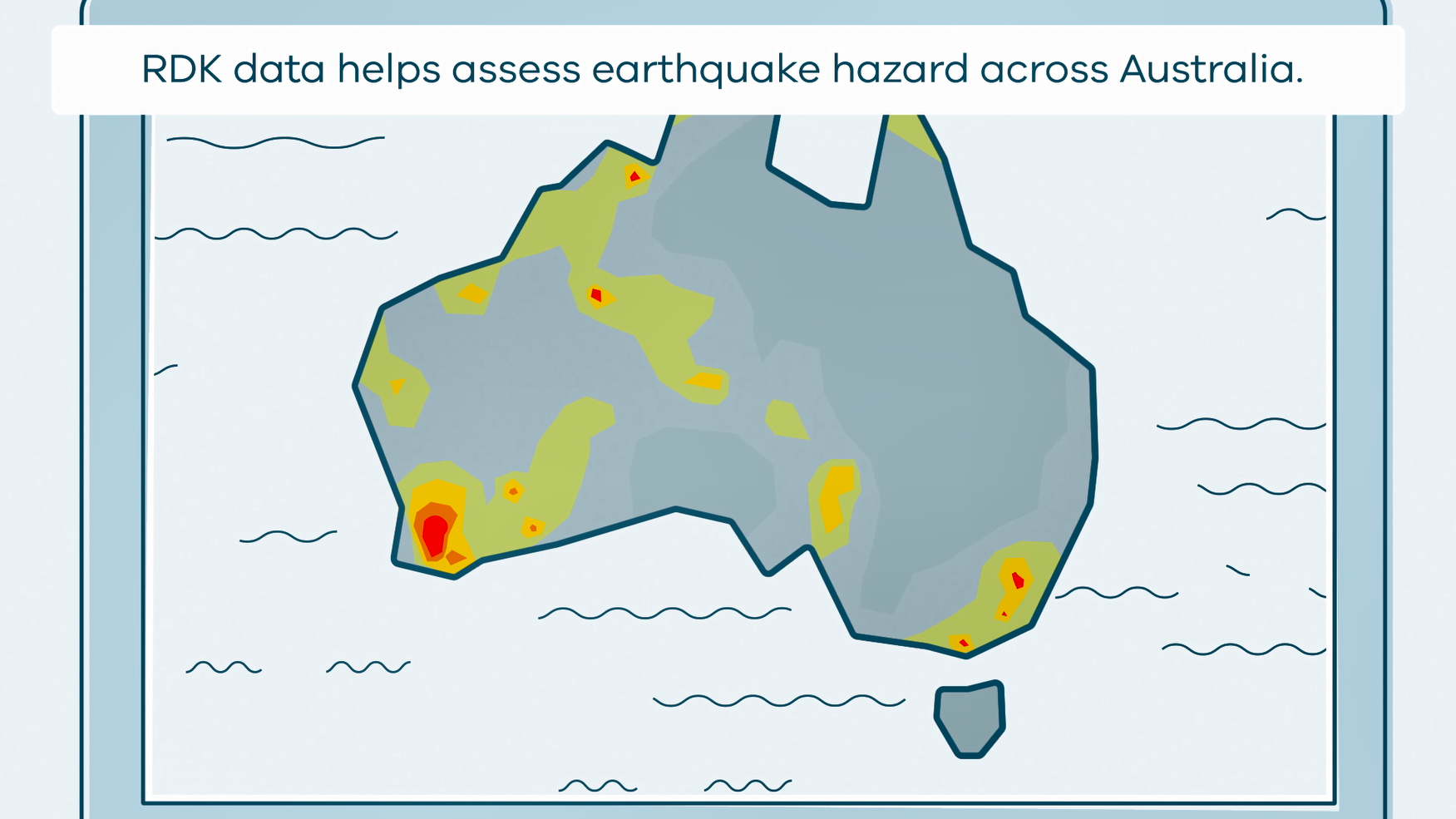Community Safety
Type of resources
Keywords
Publication year
Topics
-

This animation shows what happens when rapid deployment kits (RDKs) are deployed after an earthquake. It is part of a series of Field Activity Technique Engagement Animations. The target audience are the communities that are impacted by GA's data acquisition activities. There is no sound or voice over. The 2D animation includes a simplified view of what rapid deployment kits (RDKs) look like, what is measured, and how scientists use the data.
-
<div>In mid-2022 two paleoseismic trenches were excavated across the Willunga Fault at Sellicks Hill, ~40 km south of Adelaide, at a location where range front faulting displaces a thick colluvial apron, and flexure in the hanging wall has produced an extensional graben. Vertical separation between time-equivalent surfaces within the Willunga Embayment and uplifted Myponga Basin indicate an average uplift rate of 40 m/Myr since 5 Ma across the Willunga fault at the trench location, equivalent to a slip rate of 57 m/Myr across a 45° dipping fault. </div><div> The field sites preserve evidence for at least 4-5 large earthquake events involving approximately 6.9 m of discrete slip on fault planes since the Mid to Late Pleistocene. If the formation of red soil marker horizons in the trenches are assumed to relate to glacial climatic conditions then a slip-rate of 26-46 m/Myr since the Mid Pleistocene is obtained. These deformation rate estimates do not include folding in the hanging wall of the fault, which is likely to be significant at this site as evidenced by the existence of a pronounced hanging wall anticline. In the coming months, the results of dating analysis will allow quantitative constraint to be placed on earthquake timing and slip-rate, and a structural geological study seeks to assess the proportion of deformation partitioned into folding of the hanging wall.</div><div> The 2022 trenches represent the most recent of ten excavated across this fault. Integration of the 2022 data with those from previous investigations will allow fundamental questions to be addressed, such as whether the Willunga fault ruptures to its entire length, or in a segmented fashion, and whether any segmentation behaviour is reflected in local slip-rate estimates. Thereby we hope to significantly improve our understanding of the hazard that this, and other proximal Quaternary-active faults, pose to the greater Adelaide conurbation and its attendant infrastructure.</div> This paper was presented to the 2022 Australian Earthquake Engineering Society (AEES) Conference 24-25 November (https://aees.org.au/aees-conference-2022/)
